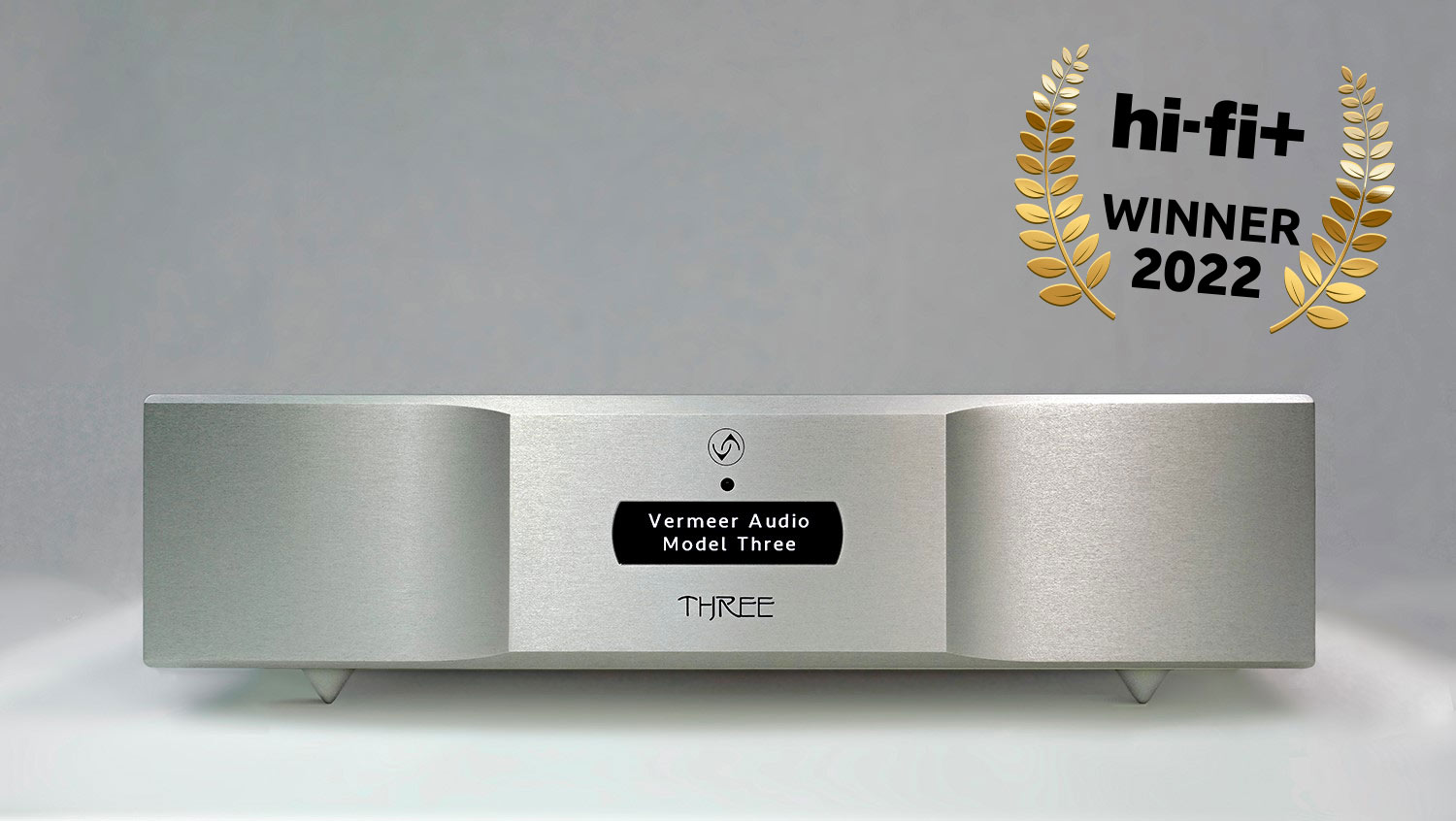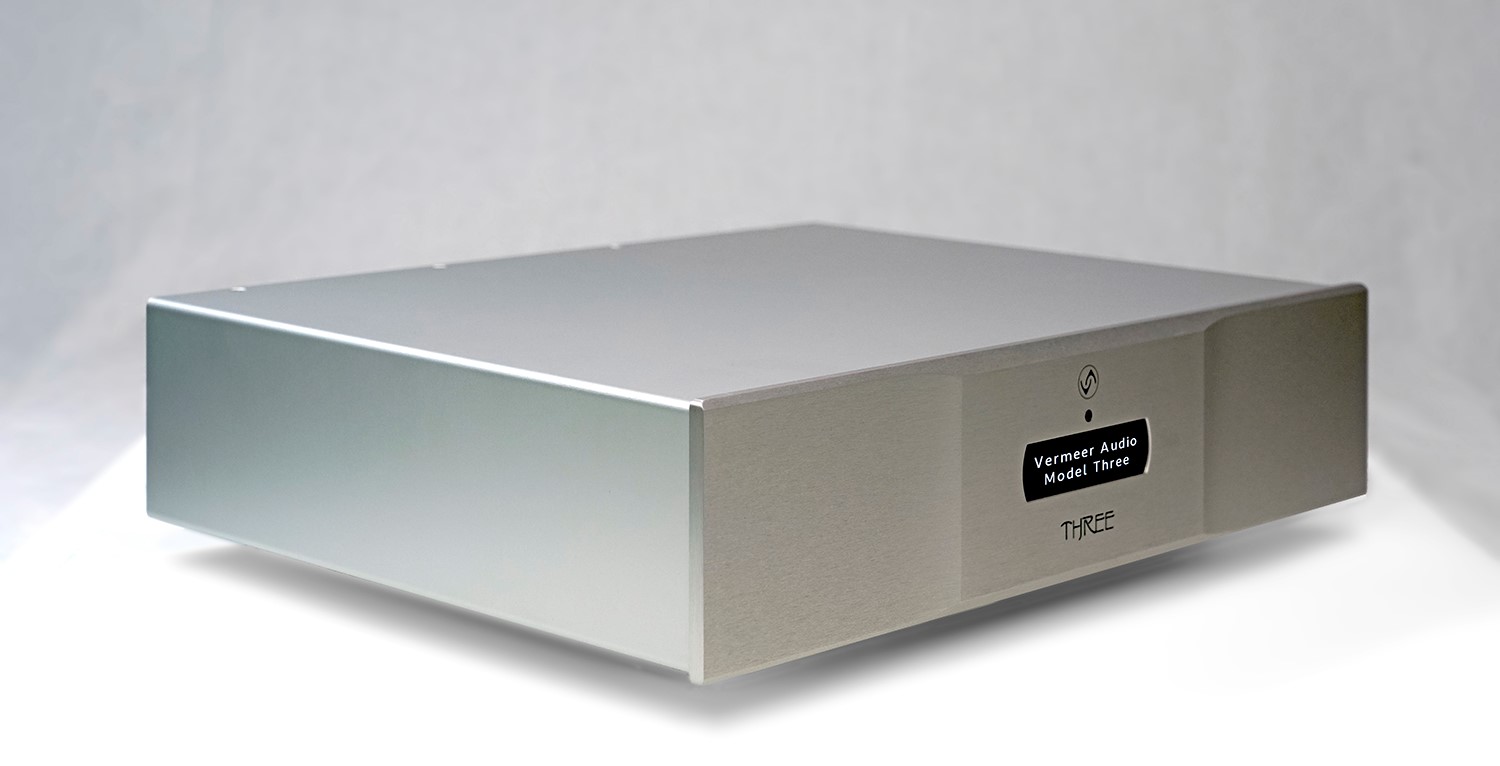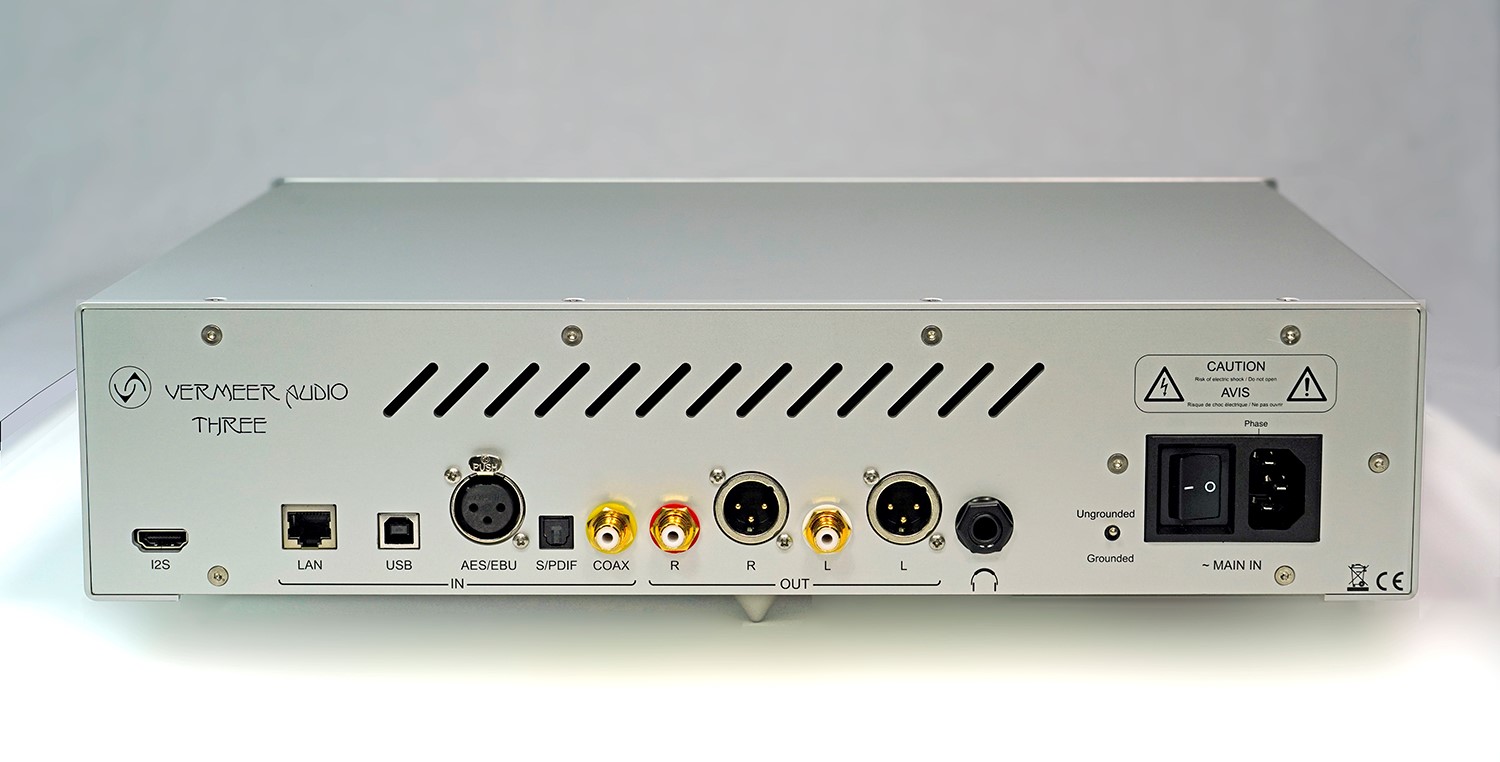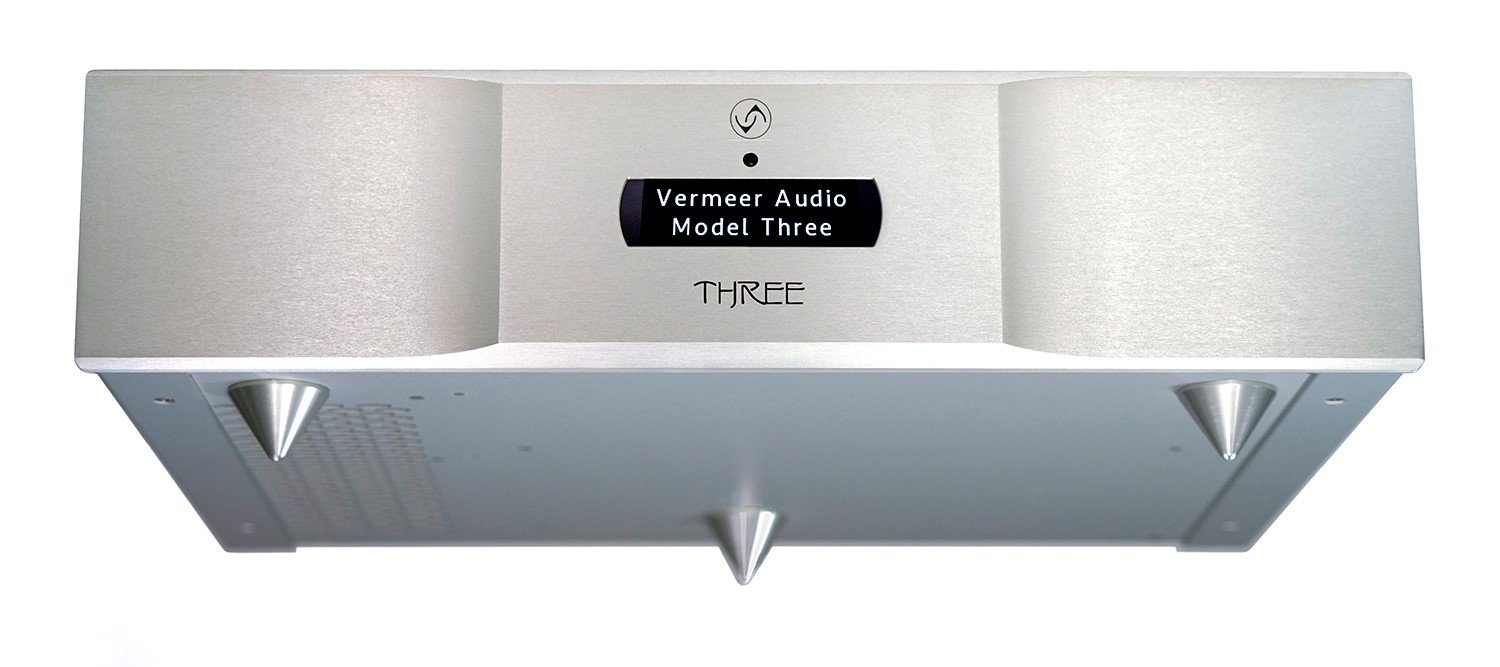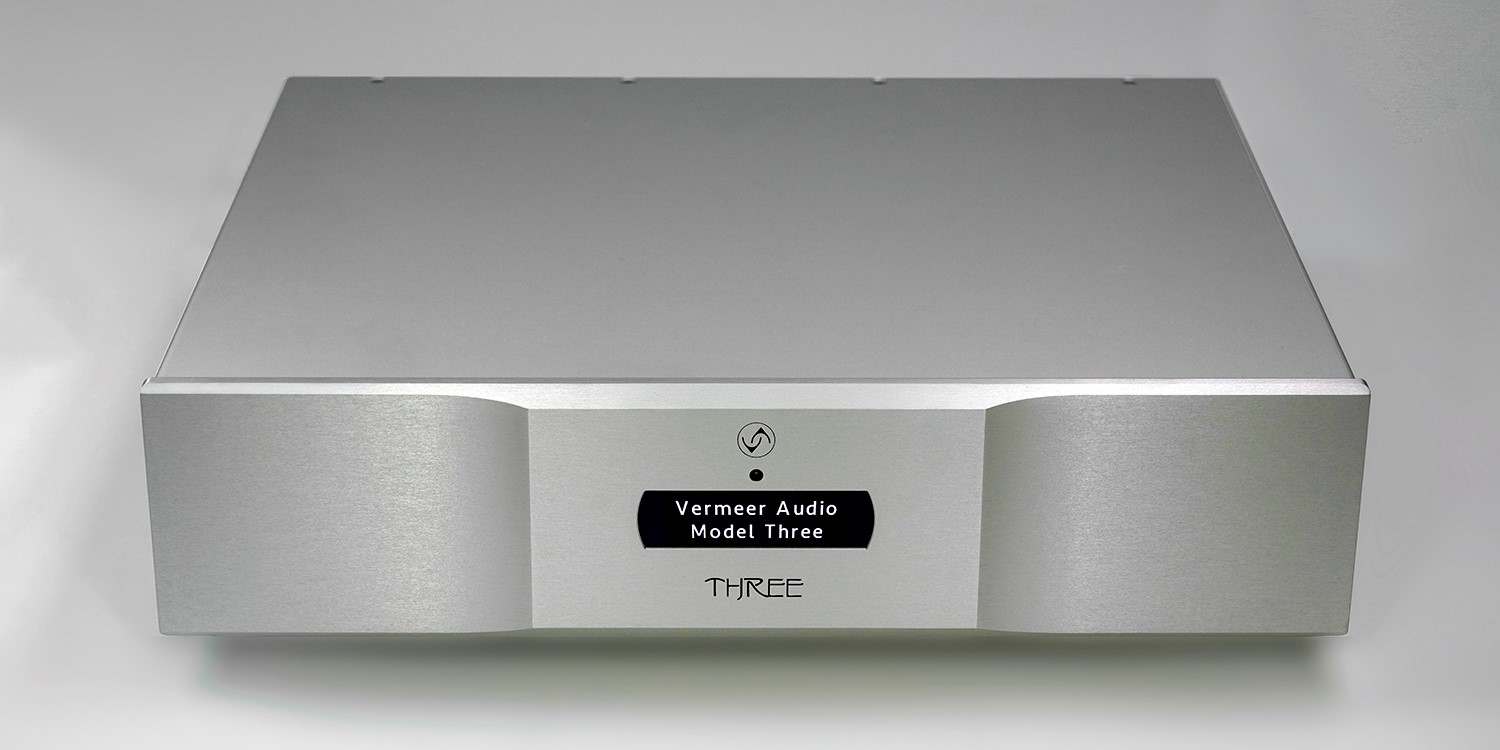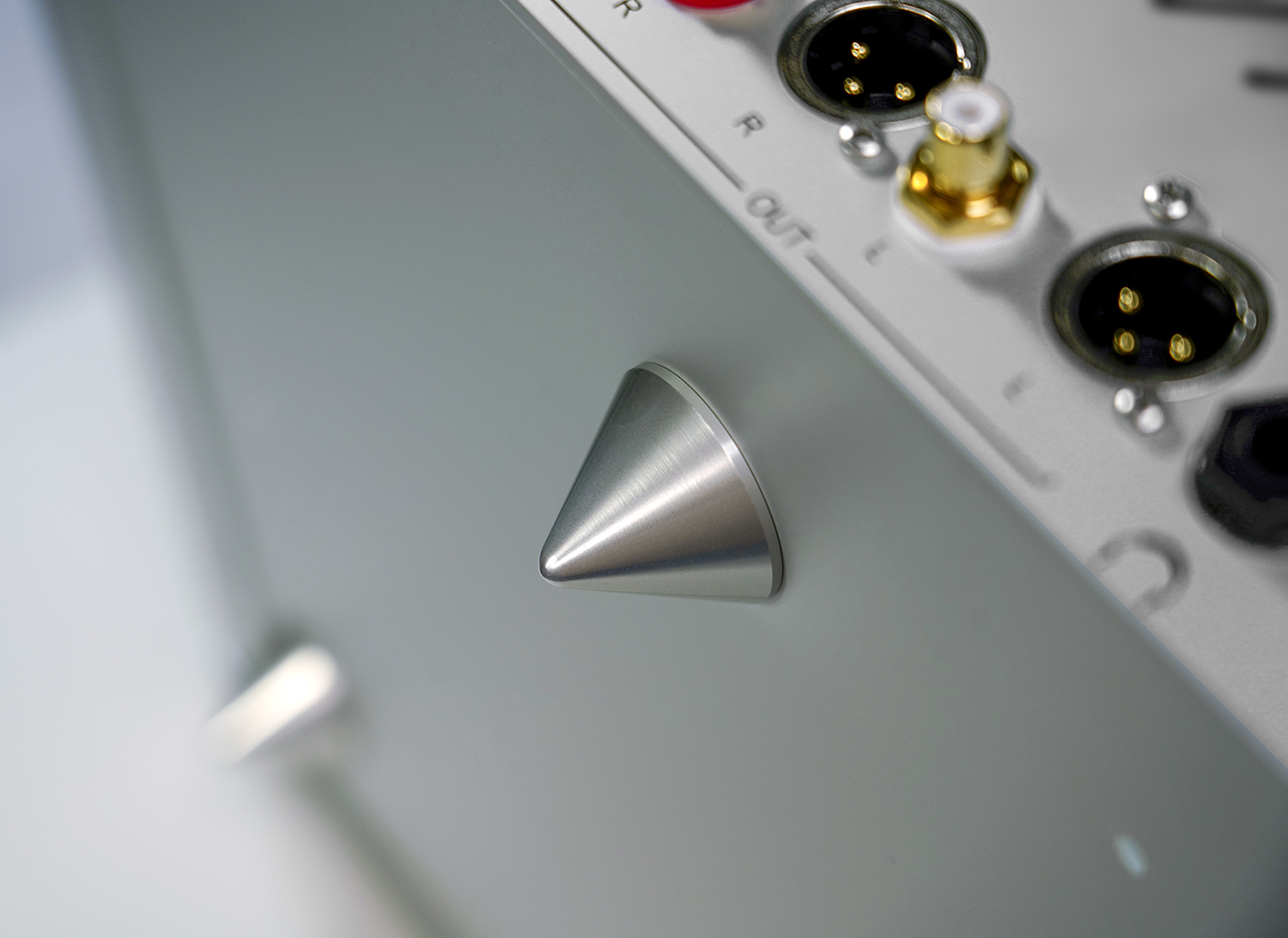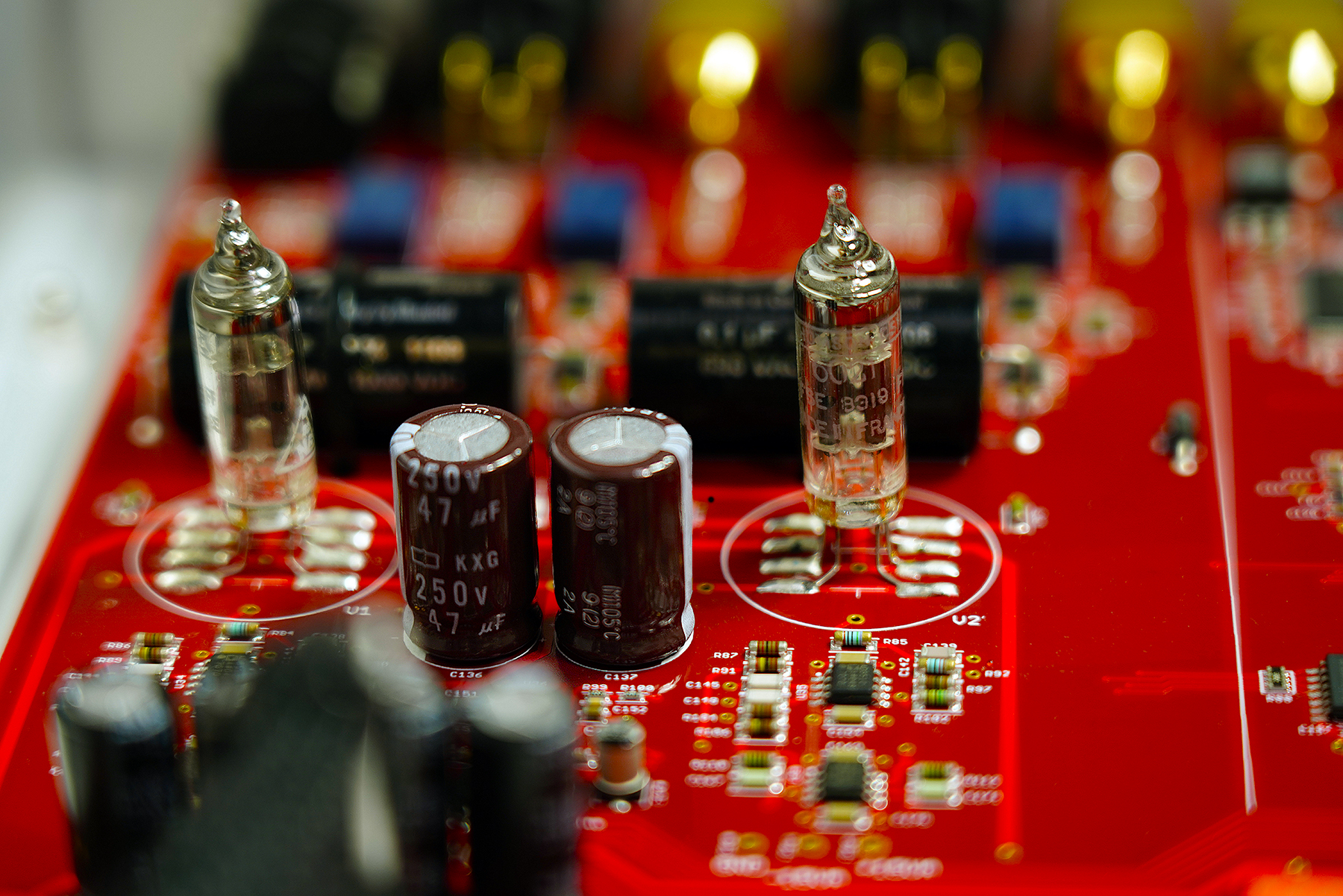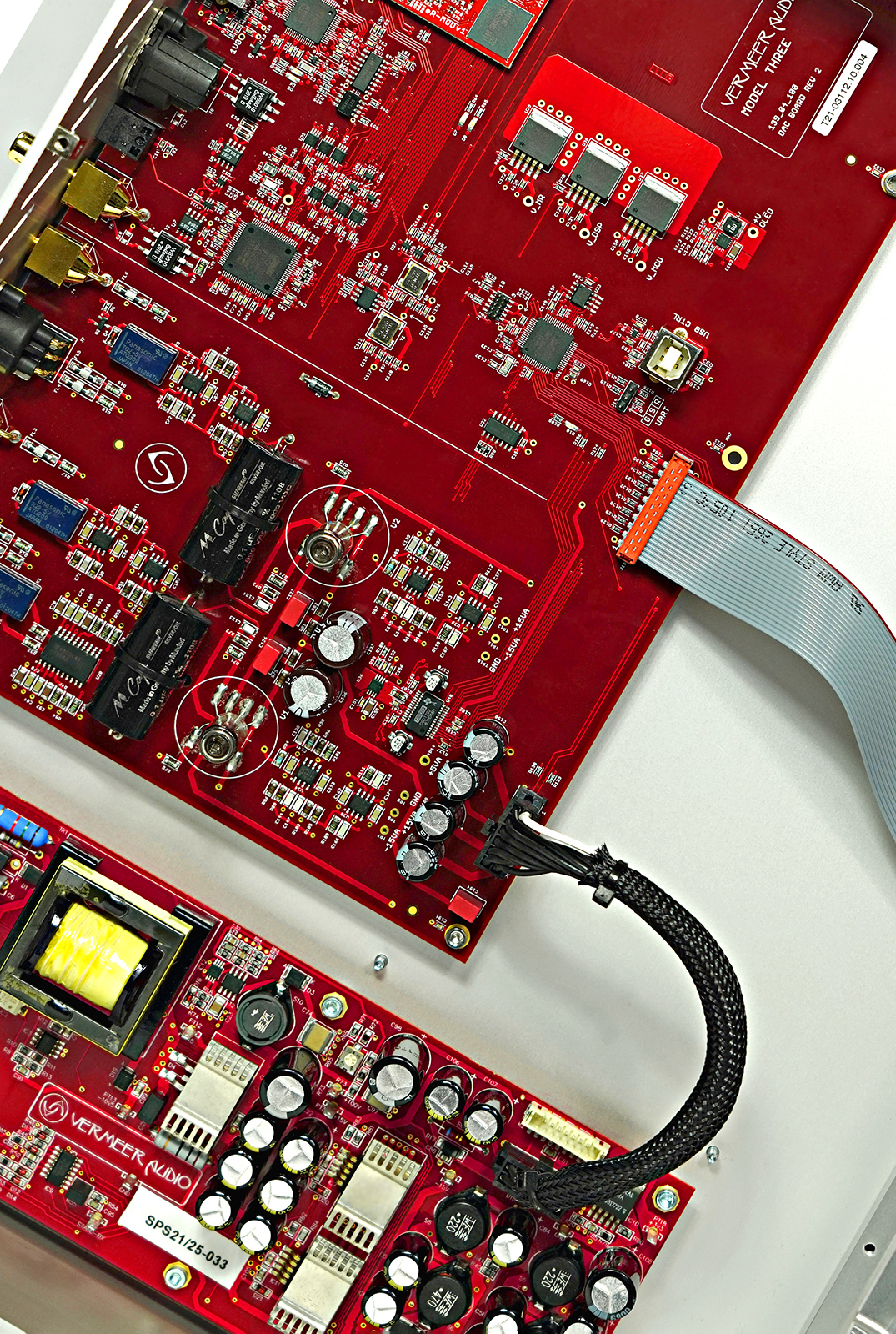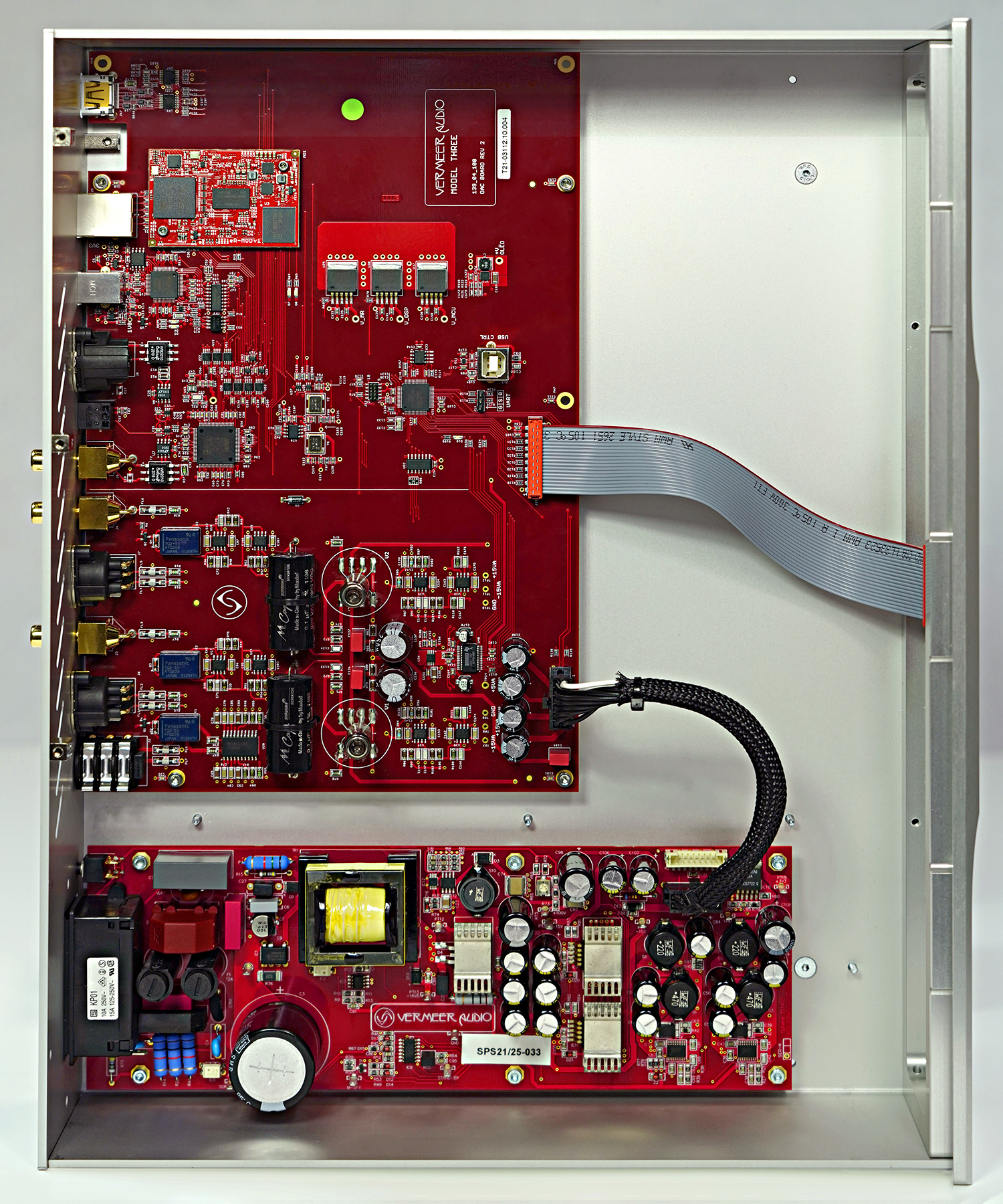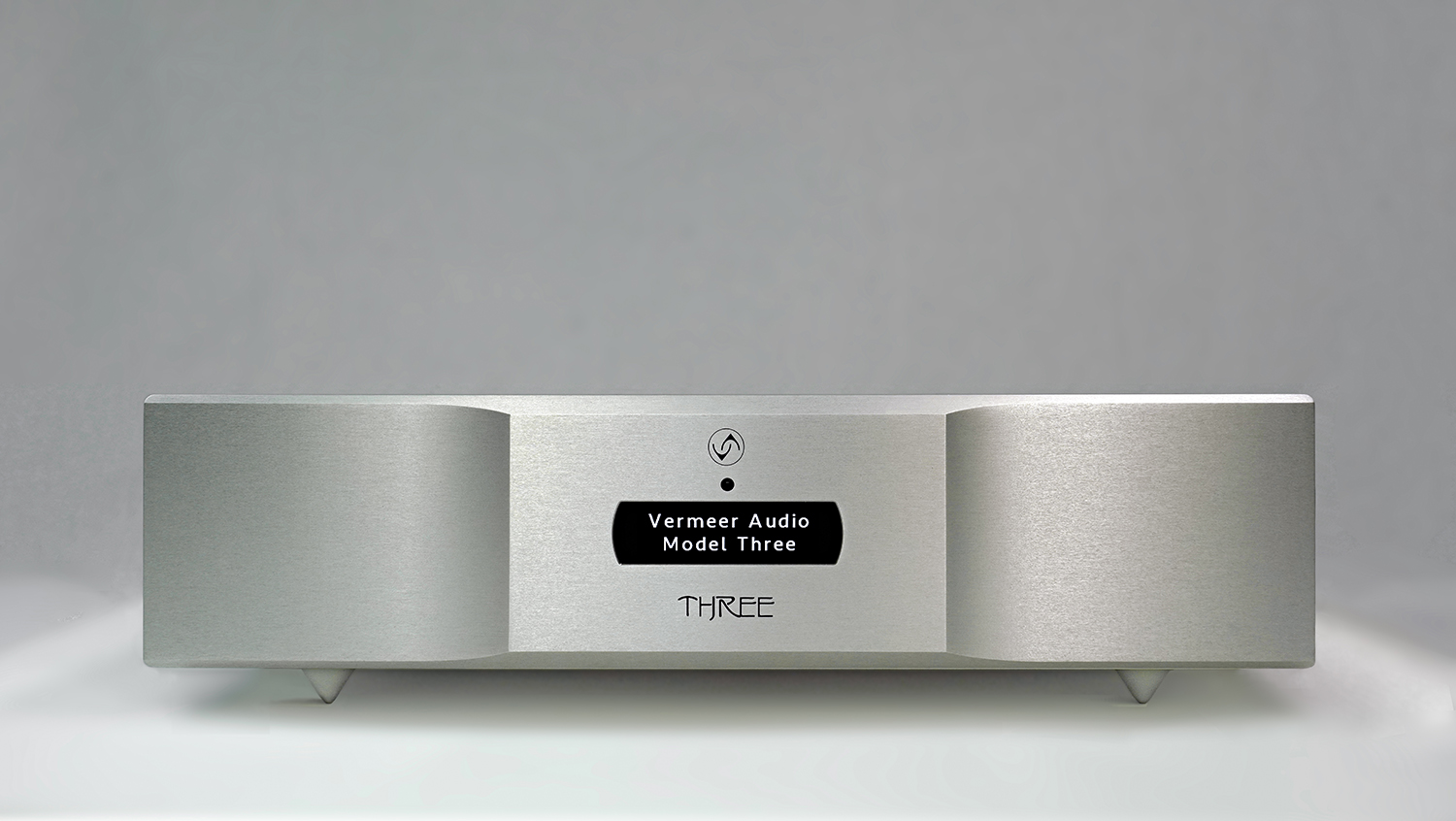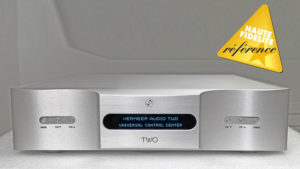Descripción
The VERMEER AUDIO MODEL THREE DAC
Since the creation of Vermeer Audio and the Model TWO, we have satisfied our music-loving and audiophile clients that had for many years been seeking a versatile unit capable of converting digital music files of all types, as well as from analogue sources, with the greatest possible fidelity and naturalness.
The Model TWO is a practically unique unit in its category, which offers in a single package all the advantages of a cutting-edge DAC, a network player, and a digital and analogue preamplifier.
We wanted to capitalize on this experience by responding to numerous requests from our clients and distributors that wanted our know-how to be duplicated in a more accessible unit offering more basic functions compared to our flagship model.
The entire Vermeer Audio team is therefore proud to present its new integrated DAC, the Model THREE D.
Model THREE D, 100% VERMEER AUDIO DNA
The Model THREE D is entirely based on the Model TWO and the components that have made this uncompromising unit a success.
Our expertise in design and in the processing of digital and analogue signals has allowed us to develop a very high-end unit that is nevertheless positioned in a more affordable price range.
The Model THREE is an integrated DAC/Network Player/Digital Preamplifier that can act as a direct source for any type of amplifier.
LEEDH Processing™: Outstanding innovative technology for digital volume control
The THREE DAC has been designed to integrate 100% digital volume control.
Digital audio still suffers from numerous drawbacks, one of the main ones being the volume control, which degrades the sound signal by modifying its shape.
This modification, which corresponds to a loss of sound information, is often perceived as a drop in hearing acuity that often leads the listener to “turn up” the volume to be able to “hear better”.
For music, which we listen to for pleasure or to relax, its quality is linked to the sound’s beauty and musical emotion. It is directly dependent upon the quantity of information reproduced with fidelity, and in particular micro-information (very low-amplitude signals) that determine the degree of realism of the reproduction of the music.
The musical reproduction chain comprises essential volume adjustments, from the recording studio to the final volume setting on your hi-fi system.
These volume adjustments are destructive and render the sound flat, which is often blamed on “digital sound” that has lost all the “warmth”, finesse and musical charm of analogue sound.
This problem of lost information, caused by digital volume control, is therefore related to the modification of the signal amplitude.
This is a well-known issue and has been recognized from the very beginning of digital audio, and has always be considered as a specific and intrinsic characteristic of this type of technology.
Faced with this problem, several years ago the LEEDH PROCESSING team started analysing the underlying problems associated with digital audio that limit potential progress.
The principle of signal digitization, represented in the form of a variation of its amplitude as a function of time, consists of discretizing both the scale of the amplitude values (a function of the number of coding bits) and the scale of the time values (a function of coding sampling frequency). Because all these values are predetermined, the signal is necessarily represented in an approximate manner.
This approximation introduces the notion of the “accuracy” of this representation which increases with a higher number of bits and a higher sampling frequency.
Indeed, since the arrival of digital technologies, the recording accuracy for audio signals has increased, going from 16 bits/44.1 kHz to 24 bits/88.2 kHz or 96 kHz, representing a 136-fold increase in accuracy.
This “culture of accuracy”, familiar to signal-processing developers, has been applied to all types of processing (volume control, filtering, oversampling, file compression, etc.), adding to the loss in accuracy of the initial signal coding, a problem that is intrinsic to the principle of digitization, with successive and cumulative inaccuracies being introduced with each operation performed on the signal with each type of processing.
Despite the minimization of these inaccuracies (or the optimization of the accuracy), which is closely linked to the power of the processors and electronic circuits, the audio result remains unconvincing and is caricatured by numerous users through the term “digital sound”.
Thanks to this expertise, the LEEDH PROCESSING team decided to develop solutions to the current digital problems, based on the “culture of the fidelity” as opposed to the “culture of accuracy”, which has shown its limits.
Based on this original approach, the LEEDH PROCESSING team has thus invented a volume-control process that allows the modification of the amplitude of the digital signal with perfect fidelity, i.e., without modification of its shape and therefore free of any loss of information.
As for the example of division, this process consists of ensuring a situation in which only exact calculations are performed on the signal, and which therefore require little processing power. Thus, the perfect quality obtained by this process is independent of the power of the processors and electronic circuits used in conventional processes.
Because the principle of the process is purely mathematical, the rigor of the demonstration of its fidelity is exemplary and unequivocal. As a result, a first LEEDH PROCESSING patent application to protect the first totally transparent digital volume control was accepted without difficulty.
The Vermeer Audio Model THREE DAC is thus equipped with the most efficient volume-control solution.
Model THREE D, much more than just a DAC
As for the flagship model, the THREE DAC is a complete digital signal processing platform designed to be integrated into a very high-end system.
The THREE D is therefore equipped with very high-quality balance and volume control, making it an ideal source for any amplifier available on the market via its RCA or XLR outputs.
The various digital inputs via USB, RCA Spdif, optical Toslink and XLR/AES-EBU connectors are also completed by an I2S format input via a specific HDMI connector.
Furthermore, the THREE D is a fully-fledged network player as it is equipped with an RJ45 input allowing access to files located on an NAS or PC connected via the user’s home network. Depending on the applications used, this function allows access to the TIDAL, QOBUZ or even HRA (HighResAudio) high-definition streaming platforms.
This function can of course be used via a tablet, smartphone or PC (UPnP/DLNA Protocol).
Last but not least, and to ensure total autonomy under all circumstances, we have included a headphones connector in the THREE DAC so that Vermeer Audio’s reproduction quality can be appreciated even without if not equipped with a loudspeaker system.
Advanced technology
The Model THREE comprises a dedicated conversion circuit and DSP specific to Vermeer Audio and operating at 32 bits/384 kHz.
The Model THREE can therefore read the majority of available digital standards via its network input.
To benefit from Vermeer Audio’s trademark audio quality, like the Model TWO, the THREE D’s final output stage is equipped with tubes, which are exactly the same as those on the flagship model.
Finally, the power-supply module used is directly sourced from that of the Model TWO.
VERMEER AUDIO construction quality
We wanted the build of this new model to be just as meticulous as for the Model TWO.
The THREE DAC has an entirely aluminium chassis and its front panel is cut from a single solid piece.
This gives the Model THREE a high degree of rigidity.
The printed circuits boards we use are traditionally of premium quality with 24K gold-plated contacts and 70 ppm copper circuits.
Main specifications
Digital inputs:
- 1 Spdif/RCA
- 1 Spdif/Toslink
- 1 AES/EBU
- 1 USB
- 1 I2S via HDMI
Network player module:
- Network input via UPnP-compatible RJ45 connector
Headphones output:
- Dedicated amplifier for headphones output, minimum impedance 8 Ohms, recommended 16 Ohms.
Analogue outputs:
- RCA stereo output, max. 2 Vrms
- XLR stereo output, max. 4 Vrms

